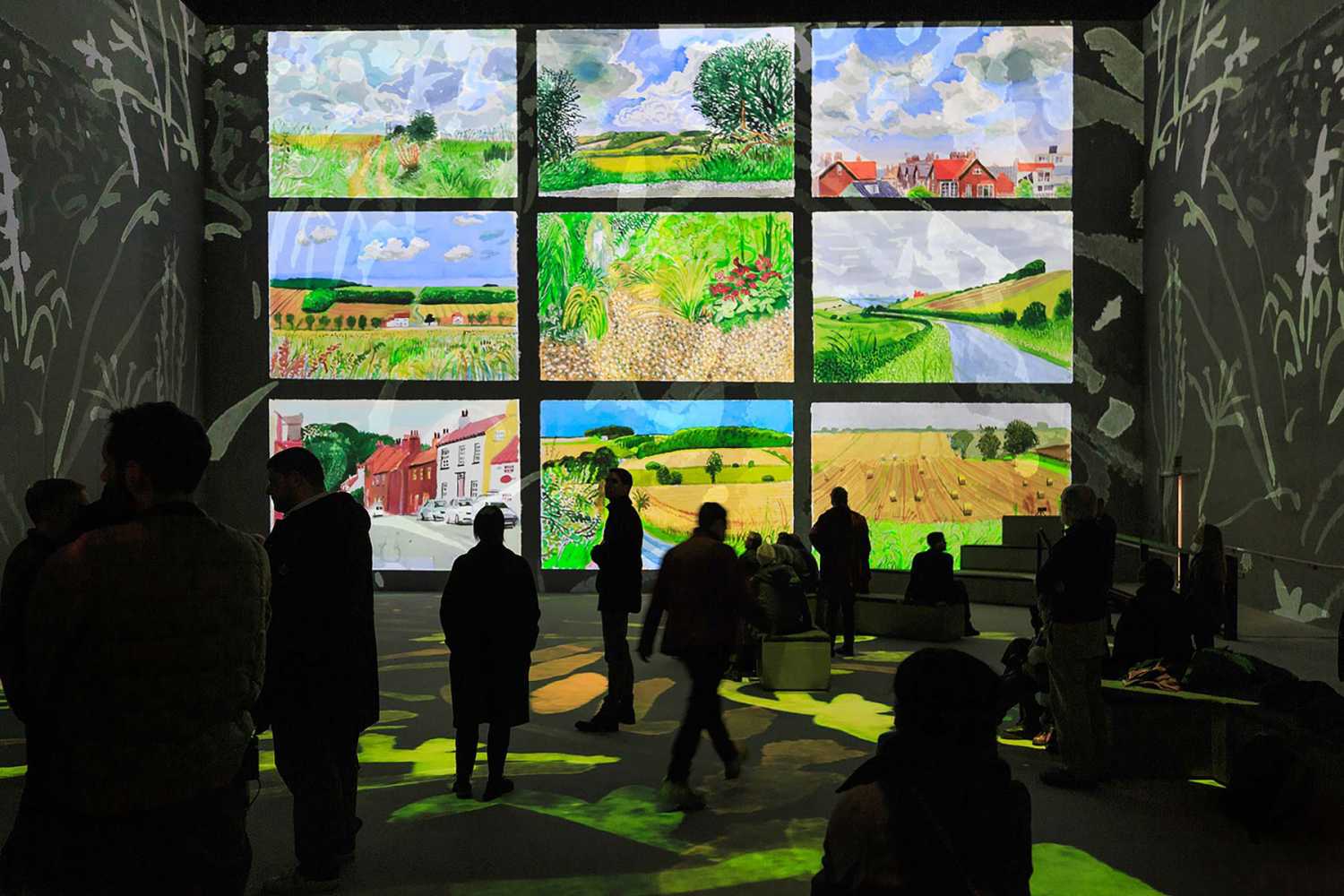Holoplot puts perspective on Hockney show
- Details

The Hockney show features a specially created score written by American contemporary composer Nico Muhly and sound design by Olivier and Tony award-winning sound designer Gareth Fry. Lightroom’s sound system is supplied by Berlin-based pro audio company Holoplot’s revolutionary X1 Matrix Array and was installed by Creative Technology.
Four and a half years in the making, Lightroom was conceived by award-winning design studio and production company, 59 Productions, and is a joint venture between them and London Theatre Company, the creative engine behind the Bridge Theatre. The Bigger & Closer exhibition allows the audience to enter into Hockney’s thought process and creative motivation, generating new perspectives on some of his most well-known, as well as more recent works.
“We’ve produced many large-scale projection mapping shows, exhibitions, and theatre shows, but we’ve never had our own space,” says Lightroom CEO, Richard Slaney, the former CEO of 59 Productions. “With immersive shows cropping up all over, we wanted to do something different. Hockney was top of our list of artists, so we emailed him to see if he was interested. Not only did he say yes, but he’s dedicated the last three years to the project. The idea of working with him was ours, but the show itself is entirely his creation.
“It’s hard to imagine from the outside, but the basement itself is 14m deep, allowing us to get projections up to 11m high. During the test phase, David came and sat next to us and talked to us about how he’d made the artworks and the stories behind them. It was then we realised this was the show we were meant to create. You want David on your shoulder, his voice in your ear, guiding you through his work. The harmonious marriage of David’s voice and Nico’s beautiful soundtrack were the two core elements, accompanied by some subtle sound effects that truly underscore the importance of audio in this unique production.”
Looking for a suitable audio solution that could turn Lightroom’s ambitious concrete structure into a smooth sounding gallery space without compromising the 360-degree visuals, the team quickly realised that conventional loudspeaker solutions would need multiple wall cavities or mounting positions on all four walls to achieve the desired immersive effects.
“The initial brief was to consider a sound system for Lightroom that would provide good sound coverage, and also not bother the neighbours in the office above the main space,” says Fry, who has a long association with both 59 Productions and the London Theatre Company. “It had to be essentially invisible so that all four walls of highly reflective concrete could be an unhindered projection surface from floor to ceiling. It was an immense challenge because as built, the space has a reverb time of over six seconds and there is very audible background noise of projector fans. All of this is the natural enemy of intelligible sound.”
Fry’s initial design was a traditional point source-based sound system, with speakers hidden in multiple alcoves around the space. “But I wasn’t happy,” he recalls. “It didn’t feel like it was going to end up sounding very good with very uneven coverage. That bugged me for months after I’d submitted the final design. But every time I looked for an alternative, I couldn’t find one that met the brief. Then I went to an early demo of Holoplot. I knew instantly that this could be the solution to all our problems.”
Fry suggested Holoplot and a system design that only required two positions within the room, yet delivered more creative tools that could be used to generate immersive effects. The system not only provided the answer for the current exhibit but also paved the way for future shows.
“There are many things Holoplot can do that I’ve never heard any other speaker system do. It has a bunch of magic tricks up its sleeves. But first and foremost, it gave us a sound system that could provide intelligible sound with very even coverage in a highly reverberant space. For that alone it was worth its considerable weight in gold!” he exclaims.
The final system design consists of two Holoplot X1 arrays at either end of the room. Each array comprises four X1 Modul 96s and four X1 Modul 80-S, embedded and entirely hidden within predefined wall cavities, each at a different height. The acoustic centre of the east array is at 4.61m and for the West Array at 6.66m. A traditional audio solution, with sources facing each other, would have created phase issues and spill between the sources.
“The biggest challenge for the installation was getting the speakers into position,” explains Jack Strong, Creative Technology business development (integrations). “But with specially designed dollies to help manoeuvre the cabinets, an experienced team and good planning, everything went smoothly. And now the system is in place, any adjustments needed for future projects can be done via Holoplot’s software, dispensing with the need for mechanical steering or for additional cabinets to be added, which is a huge advantage.”













